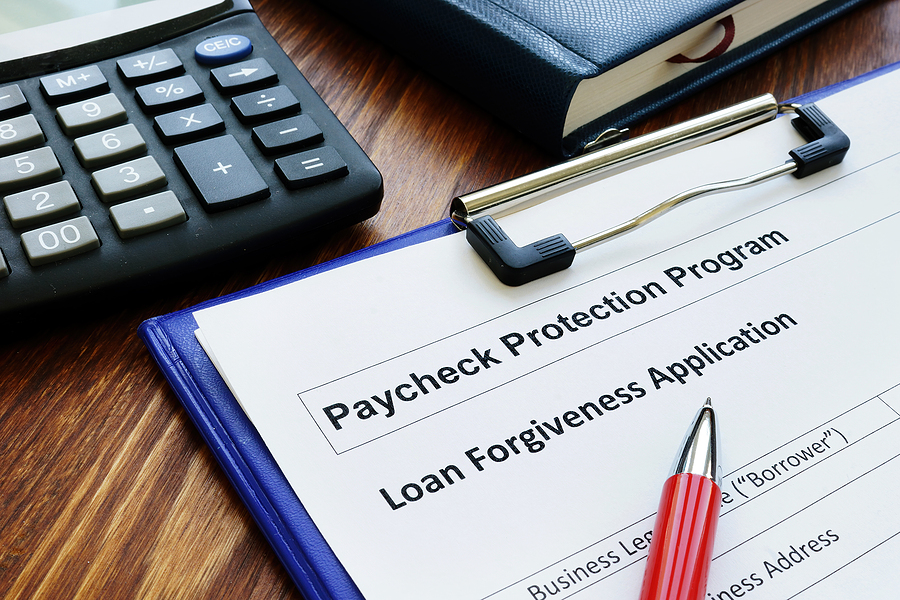What You Should Know About PPP Loan Forgiveness for Loans of $50,000 or Less

For some small business owners who took out a loan under the Paycheck Protection Program (PPP), good news has finally arrived. For a couple of months, the Small Business Administration’s (SBA) forgiveness portal was open, but many lenders were not yet accepting forgiveness applications while they waited for further guidance from the government. While there may be more updates from the government in the future, the path to PPP forgiveness is now clear for businesses that borrowed $50,000 or less.
Here’s what you need to know about the changes.
There is a Simplified Form Available
The SBA published an Interim Final Rule authorizing a new streamlined process for forgiveness of loans of $50,000 or less. The result is a new, simple two-page form called “PPP Loan Forgiveness Application Form 3508S.” The second page is a voluntary demographic information form, so the application is essentially just one page. The application requires the borrower to provide some basic information about the loan and make several certifications about the proper use of the loan, documentation submitted to the lender, and that the proper forgiveness amount is being requested.
You can see Form 3508S here, and read the instructions here.
The Rules are Simplified
In addition to a simpler form, the rules are also simplified for loans of $50,000 or less. Previously, the SBA had stated that for borrowers to have loans forgiven in full, they must maintain the number of full-time equivalent (FTE) employees and maintain wages, both during the covered period. However, these restrictions have now been lifted for loans of $50,000 or less. Even if borrowers were not able to maintain FTE employees or wages, they can receive full forgiveness.
The restrictions still apply, however, to loans over $50,000.
Work with Your Lender to Process Your Application
You will process your forgiveness application directly with your lender. You will need to provide documentation showing that you spent the loan funds on eligible expenses. These include payroll costs and nonpayroll costs, such as eligible mortgage interest, rent, and utility costs.
Now is a good time to check in with your lender and get the ball rolling. Some lenders are still implementing their internal processes in response to these changes from the SBA. Therefore, you may not be able to submit your PPP application just yet, but you probably will not have to wait much longer.
For instance, Chase and Wells Fargo have both published updates about the new rules for loans of $50,000 or less and both suggest that they are preparing to accept applications soon.
Make Sure You Understand the Forgiveness Deadline
If your lender is not yet accepting forgiveness applications, you may be worried about missing the forgiveness deadline. However, this should not be a concern for quite some time.
Some SBA forms indicated a deadline of October 31, 2020. This hardly seems realistic given the fact that many lenders have not yet begun accepting forgiveness applications, and it was a cause of concern for some borrowers.
The SBA has since clarified that October 31 is not the deadline. In this FAQ, the SBA says that borrowers “may submit a loan forgiveness application any time before the maturity date of the loan, which is either two or five years from loan origination.” However, you must keep in mind that payments are due on the loan 10 months after the end of a borrower’s covered period. Therefore, you will likely want to submit your forgiveness application before the end of this ten-month period in order to avoid making any payments on the loan.
Moving Forward
Now is a great time to start getting your ducks in a row for PPP forgiveness. Reach out to your lender to see what its current process is, and begin gathering your paperwork. As soon as your paperwork is ready and your lender is accepting applications, you can move forward with your forgiveness application. Ideally, you will want to start this process before the ten months after your covered period expires. Remember, if your loan was for more than $50,000 you will not be able to use the streamlined processes discussed in this article.
For more help with your small business needs, learn more about the NFCC’s small business consulting.



